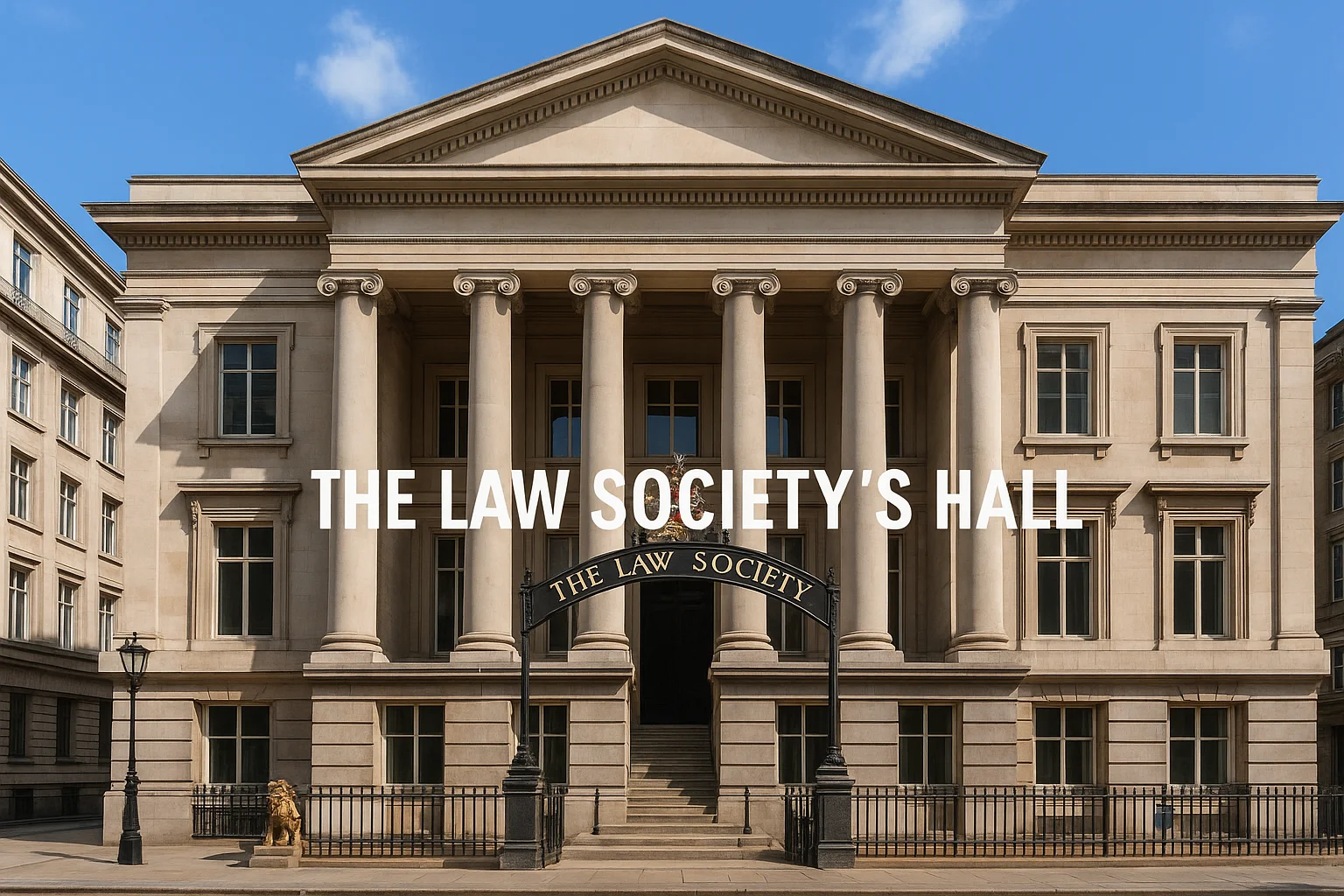Introduction
In the heart of London stands a building that represents the strength, tradition, and prestige of the legal profession. This landmark is the Law Society’s Hall, the historic headquarters of the Law Society of England and Wales. Since its opening in 1832, it has been a center for solicitors, a venue for important legal discussions, and a cultural treasure for the nation. Beyond its practical role, the Hall reflects centuries of legal heritage, architectural brilliance, and social importance.
1. Origins of The Law Society’s Hall
The Law Society was founded in 1825, originally under the name “London Law Institution.” Its aim was to raise professional standards, regulate solicitors, and provide resources for the legal community. In 1831, the Society secured a Royal Charter, confirming its authority and giving it a permanent place in the nation’s legal system.
The idea of creating a central headquarters came quickly. Members raised funds—£25,000 at the time—through shares to purchase land and begin construction. The chosen location was Chancery Lane, an area closely associated with law and justice in London for centuries.
Construction of the Hall began in the late 1820s, and by 1832, the building opened its doors to members. From that moment, the Law Society’s Hall became the symbol of the solicitor’s profession. Its role was not only functional but also symbolic, representing fairness, justice, and professional unity.
2. Architectural Design and Style
The first design was created by Lewis Vulliamy, an architect known for his neoclassical style. The building’s façade, made of Portland stone, immediately made an impression. It featured a symmetrical front with five bays, an Ionic portico, and grand granite steps leading to its entrance. The style was elegant, dignified, and befitting of a legal institution.
Over the years, the Hall went through several expansions:
- 1848–1850: A south wing was added by Vulliamy.
- 1856–1857: Philip Charles Hardwick designed a matching north wing.
- 1902–1904: Architect Charles Holden created a major extension, which was opened by King Edward VII.
Each phase maintained the classical character but added new details. The Holden extension, for example, introduced more decorative and mannerist elements while keeping the overall harmony intact.
In 1970, the building was designated Grade II* listed. This recognition highlighted not just its architectural merit but also its national historical significance.
3. Interior Highlights of The Law Society’s Hall
Stepping inside the Hall reveals an interior just as impressive as its exterior. Every room has a unique character, blending classical style with fine craftsmanship.
The Reading Room
One of the most admired spaces is the Reading Room. Designed by Vulliamy, it has Ionic colonnades running along the walls, a vaulted ceiling, and a central lantern that lets in natural light. The design creates a sense of balance and calm, ideal for study and reflection.
The Reading Room also serves as a memorial. Inside are sculptures by Gilbert Bayes commemorating solicitors and articled clerks who lost their lives during the First and Second World Wars. A statue of Athene, the Greek goddess of wisdom, stands as a symbol of knowledge and justice. Illuminated scrolls and a Book of Remembrance ensure their sacrifice is never forgotten.
The Common Room
Another highlight is the Common Room, designed by Charles Holden in the early 1900s. It is richly decorated with Cipollino marble columns, gilded Corinthian capitals, and stained-glass windows rescued from the Old Sergeants’ Inn. The woodwork was created by William Aumonier, while Conrad Dressler added an ornate ceramic frieze.
Interestingly, the Common Room was the first room in the Hall to be fitted with electric lighting, marking the institution’s embrace of modernity at the time.
Council Chamber and Event Spaces
The Hall also contains the Council Chamber, where the Society’s leadership meets. Other rooms are used for conferences, events, and private functions. Today, many of these spaces can be hired for weddings, banquets, or corporate gatherings, making the Hall not only a professional hub but also a cultural venue.
4. The Law Society’s Hall Library
From the very beginning, the library was central to the Hall’s purpose. Even before the building was completed, solicitors were encouraged to donate books to establish a legal collection. By the mid-19th century, the library contained texts dating back to the 16th century, with some manuscripts reaching into the 14th century.
The library was originally lit by candles until 1857. Despite its humble beginnings, it has grown into one of the most respected legal libraries in the UK. Members, staff, and students use it for research, training, and professional development. It remains a cornerstone of the Hall’s identity, combining tradition with modern legal resources.
5. Symbolism and Decorative Details
The Law Society’s Hall is rich in symbolism. Every detail, from statues to iron railings, carries meaning.
- Truth, Justice, Liberty, and Mercy: Sculptures by Charles Pibworth represent these four virtues, standing as guardians of the building.
- Golden Lions: Twelve bronze lions, originally created by Alfred Stevens for the British Museum, were installed at the Hall’s entrance in 1896. Identical lions guard the Duke of Wellington’s tomb at St. Paul’s Cathedral.
- Memorials: Gilbert Bayes’ war memorials ensure the legal profession’s sacrifices are remembered.
- Artistic Works: Ceramic tiles by William de Morgan, clocks by Vulliamy, and a 13-panel frieze by Conrad Dressler all add to the richness of the interior.
This combination of art and architecture turns the Hall into more than just an office space. It is a celebration of justice, culture, and history.
6. Functions and Modern Use
Today, the Hall remains the headquarters of the Law Society of England and Wales. Its functions are varied and vital:
- Professional hub: Provides services such as training, guidance, research, and professional support.
- Events venue: Hosts legal conferences, seminars, ceremonies, as well as weddings and corporate events.
- Cultural landmark: Open to the public for tours and cultural events, showcasing its heritage.
- Community space: Offers meeting areas for members and continues to support solicitors in their work.
The adaptability of the Law Society’s Hall ensures it remains relevant in the 21st century, balancing tradition with modern needs.
7. Why The Law Society’s Hall Matters
The Hall matters because it is more than a building. It represents the values of the legal profession—justice, fairness, and service. For nearly 200 years, it has been the heart of England’s solicitor community.
As a piece of architecture, it is a masterpiece of neoclassical design, carefully preserved and enhanced over the centuries. As a cultural space, it holds memorials, artworks, and symbols that connect the past with the present.
Most importantly, the Law Society’s Hall continues to serve the community. It provides resources for legal professionals, welcomes visitors, and stands as a reminder of the importance of law in society.
Conclusion
From its origins in the early 19th century to its role today, the Law Society’s Hall has been a pillar of the legal profession and a cultural treasure for London. Its neoclassical architecture, grand interiors, and symbolic details tell the story of a profession that values knowledge, justice, and tradition. At the same time, its modern functions ensure it continues to serve solicitors, students, and the wider public.
Whether admired as an architectural landmark, used as a professional hub, or visited as a cultural site, the Hall remains a vital part of British heritage. For anyone interested in law, history, or architecture, the Law Society’s Hall is a place worth knowing and remembering.


